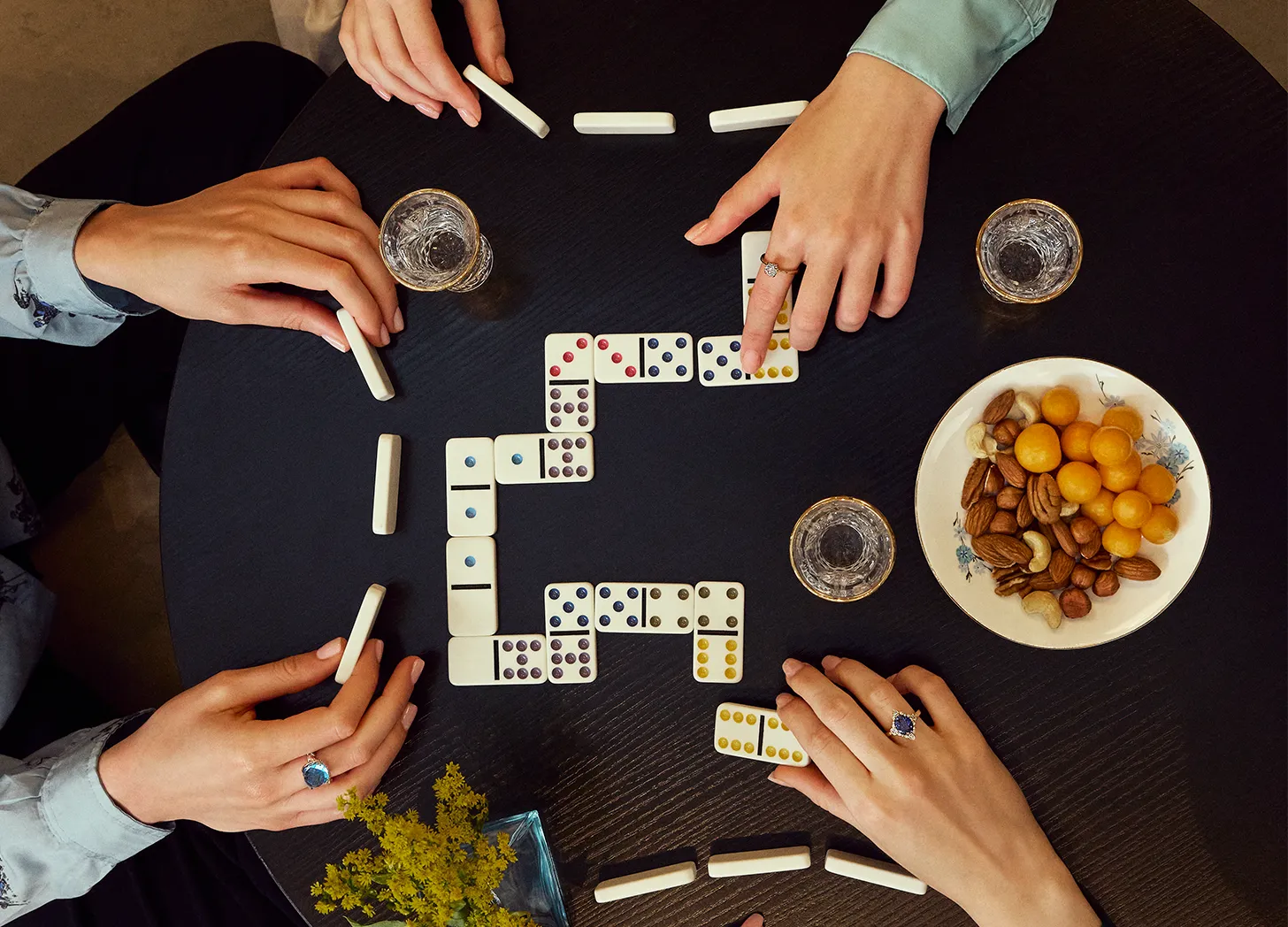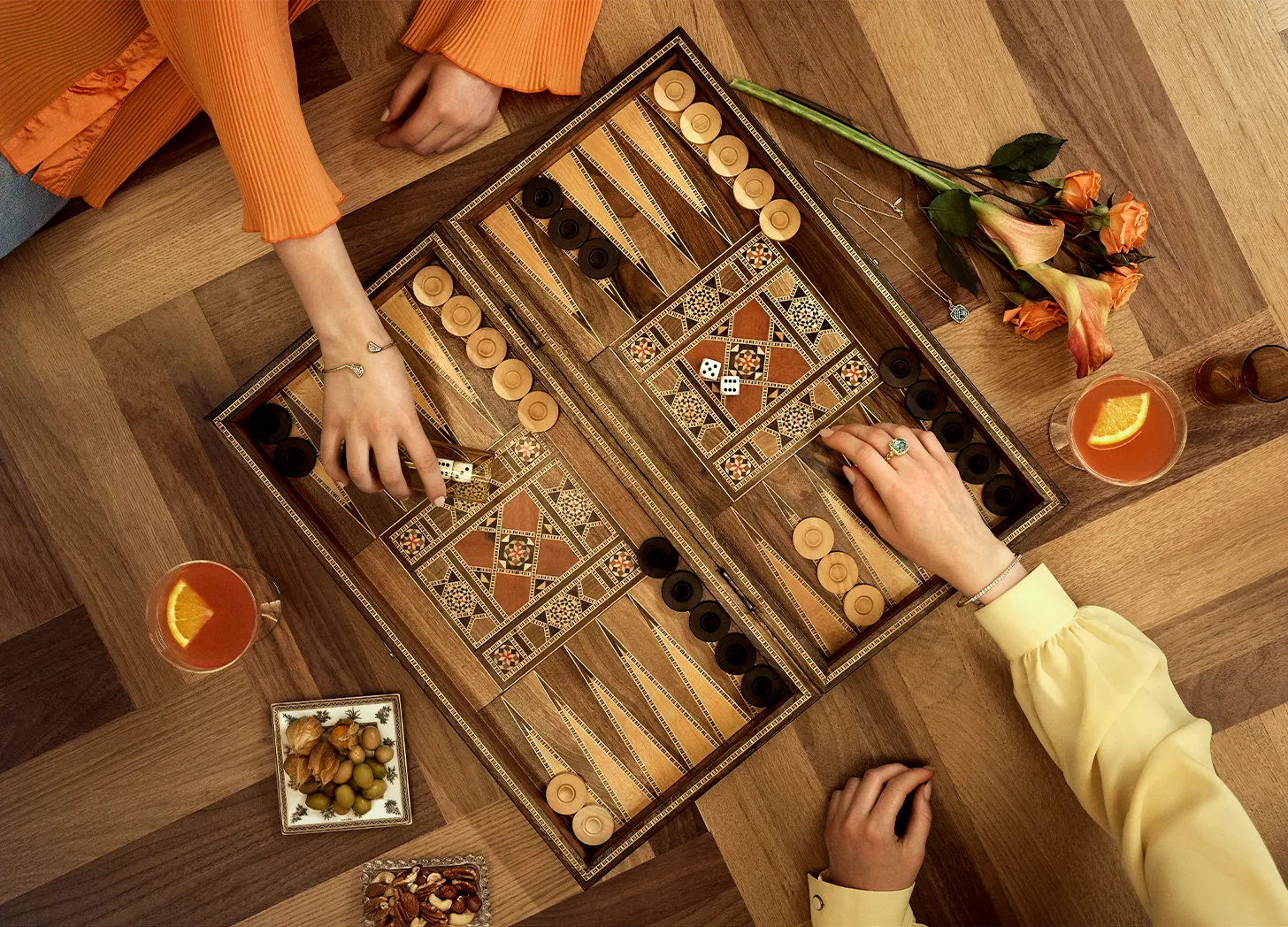Back To Square One
Back To Square One photo by sandrinecastellan
photo by sandrinecastellan
“the post-pandemic world has brought with it a resurgence of activities centered around community-building.”
In the age of influencers, doom-scrolling and the “chronically online”, it is easy to single out Gen-Z as the culprit for the too quick turnover of cultural currents, from the micro-core fast-fashion trends to never-ending TikTok challenges. Jokes are funny for a day before they become cringe-worthy, and slang terms are ancient by the time they reach the general public. The extreme pace of our 21st century zeitgeist reached its peak during the Covid-19 pandemic; being stuck at home in isolation only accelerated our scrolling and swiping, and mental health statistics crashed across the board. However, the post-pandemic world has brought with it a resurgence of activities centered around community-building, and in their usual whirlwind fashion, Gen-Z are unexpectedly leading the charge. Longing for more genuine forms of connection, young people are moving away from playing chess through a screen and digging up their parents’ real tabletop games.
 photo by sandrinecastellan
photo by sandrinecastellan
According to Stuart Heritage’s Times article on the subject, “last year, the global board game market was worth $18.93 billion; this figure is expected to reach almost $40 billion in the next five years.” How can we explain this drastic shift in our day and age, when the internet seems at the center of everything we do? The obvious answer is that people – especially younger generations are suffering from social starvation. The rise of the internet coinciding with a decrease in successful romantic relationships and empathy levels is far from random. Our human relationships are suffering from the sense of isolation brought on by smartphones and a global pandemic, and to rectify this lack, Gen-Z are drifting towards more substantial hobbies. The advantage of board games is their accessibility and versatility— there is something in them for everyone. Whether it is fashion, pirates or football, there are hundreds of themes and concepts to reach a wide audience and accommodate Gen-Z’s fast-changing interests. There are equally as many ways to construct a board game. With room for competition, collaboration and communication among other things, board games touch all aspects of human bonding. In the most basic way, they illuminate the ways in which we relate and interact with one another. Their varying degrees of complexity also contribute to their universal appeal. Elaborate high fantasy games are not the only thing out there; there are plenty of simple games to play for light fun, or as a point of entry for those with damaged attention spans from unregulated Twitter (now "X") use. Board games do not discriminate based on skill, personality, or interest, and it is because of this that they are so well-suited for building sincere collective bonds between people. They offer genuine experiences that are hard to find in the impersonal, virtual spaces of social media.
 photo by sandrinecastellan
photo by sandrinecastellan
The popularity of these virtual spaces, however, is not without rationale. The pandemic left most of us with little alternative for socializing, and all the habits built in isolation will be hard to break. Despite this, there is evidence that this solitary period is being followed by one of longing for more tangible activities. People want to interact with the physical world—— they want to touch things, move pieces of a game across a board, and be in each other’s presence rather than tapping away at 2D blocks on their tablets. Businesses that make this the forefront of their operations are rising in popularity. From tech-free cafes to board game bars, the desire for more offline experiences is boosting both cash flow and social well-being. Social media is gamified – that is why it works so well – but collecting likes is not tactile enough. People want something to hold, a world they can alter with their hands, whether that means ingredients put together to form a homecooked meal, a journal for handwriting feelings, or pieces scattered across a Scrabble board. People may be quicker to reach out through screens, but emotional distance is unavoidable. There is little room for building stimulating bonds with others through text messages. Even an activity as quiet as watching a movie is so much more personal with a friend seated next to you, rather than reacting via onomatopoeias and abbreviations in a virtual chat room.
This yearning for tangibility following Covid-19 was accompanied by the proliferation of crafty hobbies. Parallel to the board game boom, Gen-Z rediscovered the joy of working with their hands through things like crochet, bookbinding, and collaging. They have now taken this newfound urge to interact with others and with their physical spaces outside of their homes and into classes, workshops, and clubs. What all these pastimes have in common is their grounding effects; without the intricacies of meditation practices, they are exercises in mindfulness and allow past and future to fall away, offering us the opportunity to exist simply with one another, something that online spaces will never be able to offer. It is impossible to zero in on the things that matter when drifting in a sea of notifications, memes, and circular discourse.
 photo by sandrinecastellan
photo by sandrinecastellan
Putting our worries aside and partaking in rudimentary activities that seem of little significance in the grand scheme of things is at the basis of our most meaningful relationships. The enchanting uselessness of collecting cards or moving chips across a table has a calming impact on our minds and bodies; by downsizing our personal universes to fit them on a board, where the rules, challenges and goals are manageable and straightforward, it is easier to recognize what is important to us. In a game, the only plan to make is your next move, and the only people requiring your attention are those you are sharing the moment with.
“In a game, the only plan to make is your next move, and the only people requiring your attention are those you are sharing the moment with.”
Without negating the importance of some well-earned alone time, these real-life interactions are essential to leading a balanced life. Since social media has become a consistent part of our daily routines, our moments of leisure have now come to be centered around solitude. The word “social” is misleading— it is a space where we go to withdraw from the world, and unwind through endless scrolling, with little genuine interactions with others. In a pre-internet era, our downtime was much more communal. Through beers at the pub, clubs, or extracurricular activities after work, relaxing was something that could be done together. Whether these online platforms are socially or intellectually stimulating is debatable, but their anxiety-inducing effects are undeniable. It is easy to maintain the illusion that we are unwinding through Instagram reels, but the resulting content oversaturation, procrastination and digital echo chambers are not doing our mental health any favors. It appears people, however, have a natural impulse to push back against what is in the way of their intellectual and spiritual fulfillment. This is why generations that grew up on the internet are now discovering the benefits of collective leisure activities and being more conscious of their screen time. Our instincts are leading us away from an impending digital burnout, and towards simpler tabletop universes where control and independence are achievable. Our economy is evolving because of this. With Gen Z now leading the new “experience economy”, transactions are no longer strictly about the product. They are about more than the board game pieces, the equipment, or the artwork. Instead, commerce is about the experience you get out of the object. This participatory component is changing the way we spend our money. We want to do and be, not own. With every purchase we want to know: will this be fun? Will it be fulfilling? We are searching for meaning, and because of this our consumer experience is much more three-dimensional and community oriented.
 photo by sandrinecastellan
photo by sandrinecastellan
“[...] generations that grew up on the internet are now discovering the benefits of collective leisure activities.”
The exponential increase in board game popularity comes hand-in-hand with this new experience economy and their universality is helping bridge the gaps between generations created by social media. In addition to this unique intergenerational aspect, they provide alternative modes of communication. In a game context, the intricacies of our personalities, weaknesses and strengths are on display. Are we confrontational? Collaborative? Competitive? Are we leaders? Sore losers? As much as they often bring out the worst in us – everyone has a board game-induced family tantrum story – this is part of what makes the experience of playing an intimate one. Through games, just like sports or debates, we get to know each other, how we work together, where we clash, how we confront one another. Unlike the divisiveness of social media, games are team-building exercises, and antidotes to polarization. They strengthen our relationships.
photography by Sandrine Castellan

